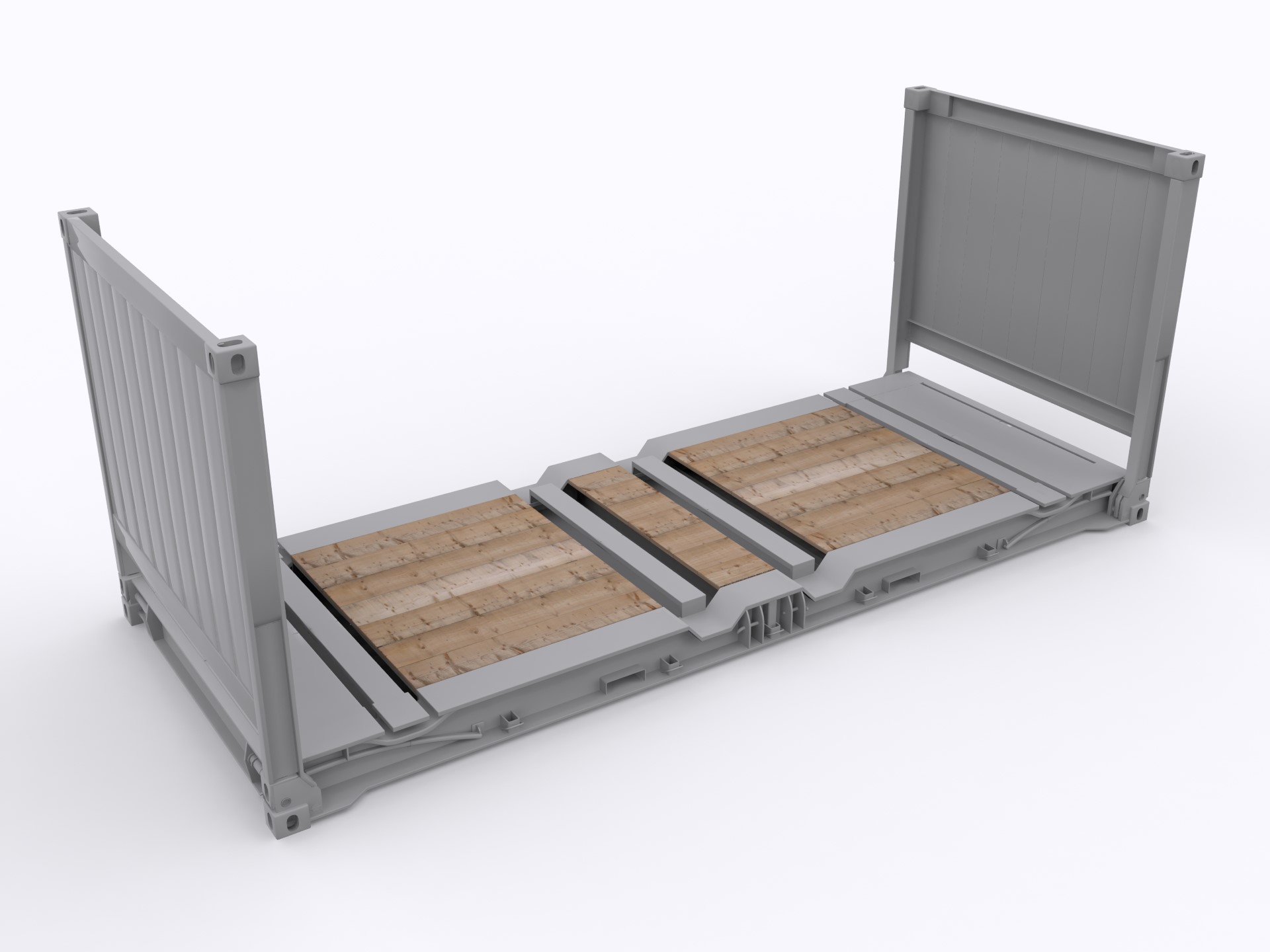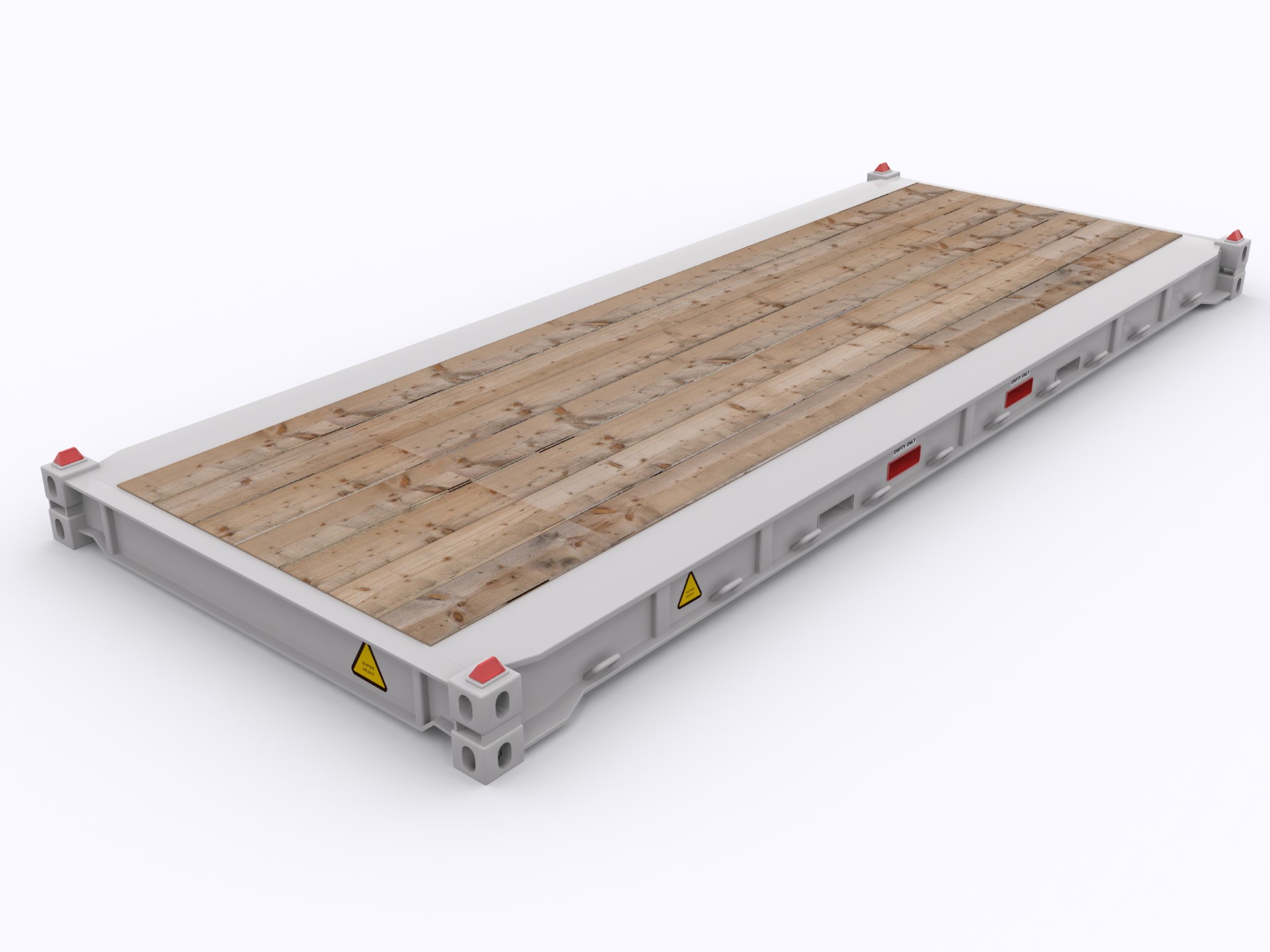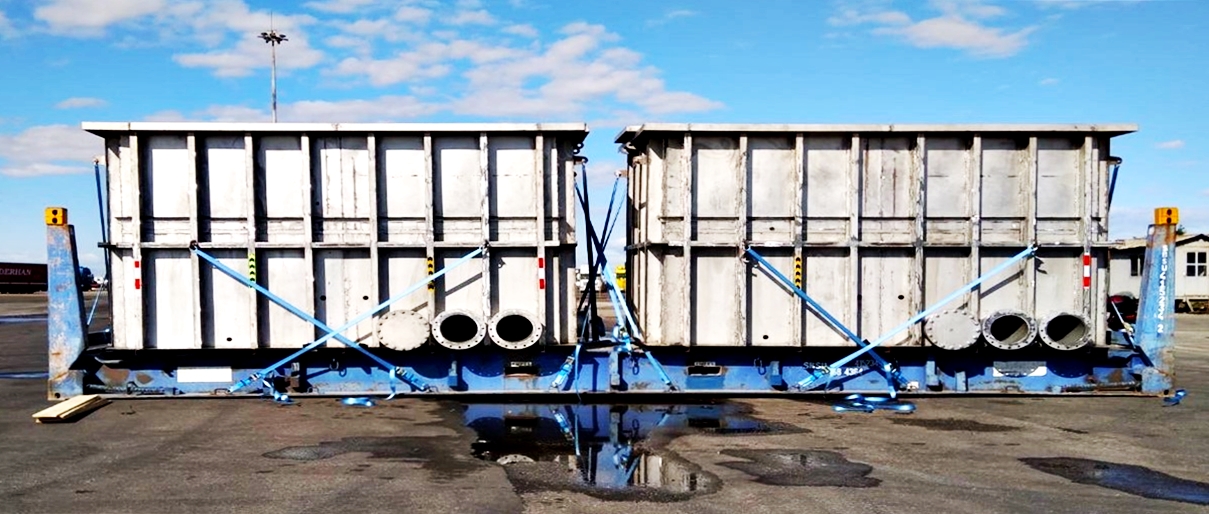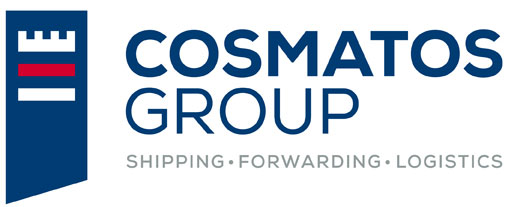Flatrack containers are designed to accommodate heavy and oversized cargo which cannot fit inside standard dry containers, either due to excessive dimensions or cargo weight that exceeds 24-25 mts.
With heavy duty steel base, some 40′ flatracks can handle up to 45 metric tons of cargo.
Flatracks come in two sizes: 20′ and 40′ in length. Below images are some examples of flatracks.
Below guidelines stipulate how cargoes should be stuffed, stowed and secured on flatracks prior to loading on any vessel, in order to ensure a safe voyage.
Stuffing
Cargo should be positioned on the flatrack in a way that ensures suitable weight distribution, both along the length and width, so that the center of gravity is as much as possible close to the center of the flatrack.
Weight distribution
The main strength of a flatrack lies in the two bottom rails. Therefore, cargo must either rest on these rails or have its weight transferred to the rails with the use of wood dunnage. The maximum payload can only be utilized, when the cargo is spread over the entire length of the bottom rails of the flatrack. Heavy weights are not allowed to be solely placed on the wooden floor of the flatrack. Cargo is to be positioned on the flatrack with its center of gravity in the middle of the flatrack, both length and widthwise. Specific requirements and limitations may vary depending on the carrier.
Anti-slip material
Any contact of metal to metal surfaces should be avoided. Wood dunnage or similar anti-slip materials, such as rubber mats, should be placed between metal cargo surfaces and the flatrack bottom rails. Using anti-slip material with high friction decreases the quantity of lashing required.
Lashing
In general, all cargo must be secured by using materials which are suitable and certified for the size, construction, and weight of the load. The following points should checked at all times:
- Web lashings require protection (usually with rubber) when in contact with sharp corners.
- Different lashing materials, such as wires and web lashings, should not be mixed on the same cargo, at least not in same lashing direction, for securing purposes. Different materials have different elasticity and create unequal lashing forces.
- Turnbuckles and shackles should be secured, so that they do not loosen up and shift open during the voyage.
- The strength of a lashing system is indicated by various factors such as breaking strength (BS), lashing capacity (LC) or maximum securing load (MSL). For chains and web lashings, the maximum securing load is considered to be 50% of the breaking strength.
Carriers reserve the right to inspect flatracks prior to loading and to refuse acceptance in case stowage and / or securing do not meet SOLAS requirements, or are not deemed safe. For that reason, as a rule, a cargo marine survey is conducted on all flatrack cargoes to provide professional lashing instructions, as well as issuance of the relevant certificate.







